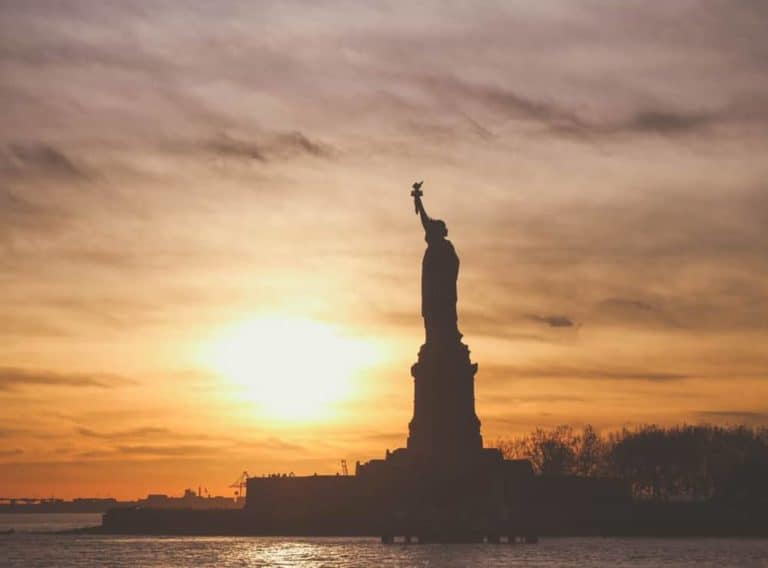Both the novel and the American society correspond to the beginning of a modern era. America is a direct consequence of the Age of Reason (18th century).
Indeed, the first settlers intended to escape the tyrannical power of absolute monarchs.
The novel is also the result of a revolution :
- social revolution: when the middle class asserted its cultural autonomy
- ideological change that puts the single individual at the centre of the world
Yet, there are profound contradictions:
- America did not offer favourable conditions for the birth of the novel. The notions of class, love, and marriage are central to the novel.
- the 18th-century and 19th-century novels are about chasing a husband.
- the European novel favours a plot with a domestic story and marriage E.g.: Pride and Prejudice, Madame Bovary.
- the American novel avoids treating passionate relationships, focuses on male characters, and turns away from Society to Nature. E.g. Moby Dick, The Last of the Mohicans.
American novels dream of the innocence of the first settlers but Puritanism and the notion of guilt proved to be fundamental in American literature. This feeling of guilt included the rape of nature and the exploitation of the Natives.
The Lost Prairie
The early 19th century can be described as an American Epic. James Fenimore Cooper’s The Leatherstocking Tales gave America legend and myth.
The two main themes are:
- the settlement: how pioneers got used to a new life in the American wilderness;
- the frontier, which can be described as an ideal boundary between two cultures: the “civilized and cultivated” society, and “wild and lawless” tribes. The frontier is also a limit pushed further westward.
Settlers and trappers and the Great Prairies
The central character found in Cooper’s Tales is a trapper surviving by catching small animals: Natti Bumppo. He’s a white man who has lived with the Natives and respects them. He’s suspicious of progress. He’s a typical American hero – a poor lonesome trapper.
The notion of solitude is significant. According to Alexis de Tocqueville’s De la Démocratie en Amérique, democracy is about a world of lonesome men owing their allegiance to none, men who are neither servants nor bondsmen. Self-reliance is key although man is constantly watched by God’s invisible eye (puritan view and the sense of guilt).
The Frontier is a virgin land, the New Eden, the biblical Promised Land. The utopian territory is soiled and tarnished, corrupted: by invading those new virgin lands, the conquerors brought along their greed for money, their lust for power, and their selfish appetite.
As a consequence, their adventures are bound to damage what they most cherish, respect, and admire.
The land is turned into a battlefield opposing white men against themselves and Native populations. The dream of purity and innocence turns into a sanguinary and bloody battlefield.
East and West, North and South
The East represents industrialisation, urbanisation, corruption, and sin while the West represents the last rampart against encroaching civilisation, the last space of innocence and purity.
The North is Yankee, modern and industrial while the South is Dixieland, with the colonial south, agricultural and colonial area with the cotton fields There is a clash between conservative (South) and modern/liberal (North).
We can see these oppositions in very famous pairs of characters: Cooper’s Natty and Chingachgook, Melville’s Ishmael and Qeequeg, and Twain’s Huck and Jim.
The Prairie’s posterity
Novels have often recounted a flight or escape towards a mystic and idealised West. In Grapes of Wrath, a bunch of dislocated farmers is making the same journey as their ancestors, their eldorado being California.
In the 1920s-1930s, America had become a modern country and the far west was still very much synonymous with freedom and anarchy. American novelists are like their books, escaping their familiar environment (Huck escapes with a runaway slave for instance).
In the 1920s, American writers left America for Europe, they were the writers of the “Lost Generation”: Ernest Hemingway, Henry Miller, Francis Scott Fitzgerald, and Gertrude Stein all came to France to write about America.
In the 1950s, the writers of the “Beat Generation”, such as Jack Kerouac, went to California: San Francisco was then identified as the ideal of freedom.
Yet, the journey is not always physical. It can be symbolic, of a retreat from society by getting isolated: Emerson went to Concord, and Thoreau went to Walden, at the fringe of society.
The realist jungle
Urban America was depicted in Fritz Lang’s Metropolis and Charlie Chaplin’s Modern Times.
America is going to deal with the metropolis in a simplistic and Manichean vision that opposes the Prairie, synonymous with innocence, with the City, a place of evil and corruption.
This innocence was destroyed by immigrants as men broke what had been their dream. The vision of the city reminds us of biblical references: buildings and skyscrapers are reminiscent of the Tower of Babel, their dreams of going beyond and transgressing human limitations.
Romance is the universe of the prairie whereas the novel, with its elements of realism, deals with the shabbiness and ugliness of the city.
The American realist novel
In the late 1890s, the notion of realist novel appeared in America.
In 1893, Stephen Crane describes the poverty and evils of city life in Maggie, a Girl of the Streets.
in 1899, in McTeague, Frank Norris narrates the life of a man who becomes a dentist with no particular training, which ends in a tragedy.
in 1906, Upton Sinclair paints a world in which selfishness prevails in The Jungle.
The end of the 19th century marks the disappearance of the Frontier and the collapse of the Jeffersonian ideal. Jefferson insisted on the faith of moral virtue (man is good, which reminds Jean Jacques Rousseau’s myth of the “good savage”) and envisioned an agrarian society in which brotherhood and solidarity prevailed. In this utopia, farmers were the chosen of God.
The yeoman farmer best exemplifies civic virtue and independence from corrupting city influences—government policy should be for his benefit. Financiers, bankers, and industrialists make cities the “cesspools of corruption” and should be avoided.
This vision was destroyed by the development of cities and the process of industrialisation.
Pessimism in American fiction was due to the fact there was no frontier any longer, the Jeffersonian ideal, and two scientists – Darwin and Spencer, who showed man as a biological creature in a materialistic world.
The final factor was immigrants from Eastern and Southern Europe, coming with their poverty.
Success and individualism
- James Hector St John de Crèvecoeur: Letters from an American Farmer (1782)
- Benjamin Franklin: Autobiography (1784)
- Max Weber: The Protestant Ethic and the Spirit of Capitalism (1905)
These books all deal with capitalism and religion. According to Puritanism and the concept of predestination, those who succeeded financially were chosen by God.
Money was a sign that you were among the happy few who were elected to go to Heaven. Being a loser meant you were left aside by God and did not deserve an afterlife.
Success was deemed a private contract between Man and God and what was lost was the notion of solidarity.
Babbitt or the debased American dream
Babbitt by Sinclair Lewis (1922) showed that the American dream had eroded, was damaged, and trivialized, shifting from the spiritual to the material, in a society that has become conventional. Life is standardised and originality is not valued.
Babbitt is the paradigm of the smug and prim bourgeois. He’s a Joe Q. Public, the average man in the street.
Religion has become a capitalistic enterprise and the American dream has degenerated into class ideology.
The Age of the American Novel
See The Age of the American Novel by Claude Edmonde Magny.
In the 1920s, American novelists were more and more interested in innovating new techniques, testing, and experimenting with the form of the novel.
During the Roaring Twenties, the Hollywood industry developed and so did close links between Hollywood and writers such as Faulkner and Fitzgerald, who wrote film scripts.
As a consequence, some cinematic devices were transferred into fiction and there is a link between scriptwriting and fiction writing.
New syntheses
In the 1920s, fiction writing was influenced by motion pictures, jazz music, the staccato movement, and psychoanalysis.
The consequence of cinema is that the linear chronology and the lengthy descriptive passages were abandoned.
The single narrator’s viewpoint is replaced by different angles of vision and it is the introduction of several actions happening at the same time.
The objective technique
The great novelty of the 1920s is promoting an objective and direct mode of narration.
This is what Dos Passos called “the camera eye” – which consisted of doing as if the text was writing itself, without the presence of a narrator: the characters are seen from the outside, no explanations are given to justify their attitudes, the influence of journalism makes the style plain and simple with the use of collage and fiction extracts invented by the writer, put next to pieces of newspapers articles.
Conclusion
Francis Scott Fitzgerald stands in a complex relation to the American novel. European fiction emphasises feelings whereas, in American fiction, love stories are unimportant.
Yet, The Great Gatsby combines two traditions: through the American myth, Fitzgerald is related to the American novel, and by putting a love story at the centre of his novel, he also reminds his reader of European novels.

